What is a series or parallel connection?
As we know from the circuit theory, to achieve a specific power transmission in a system, we can hold the voltage at a fixed level and then increase/decrease the electrical current. It is also possible to fix the current level and then increase/decrease the input voltage to reach the desired power level. This phenomenon can be applied to the system by connecting the batteries in parallel/series. In a photovoltaic system, we can connect the solar panels in series, which leads to a fixed current level while the voltage of the panels will be added to each other. Parallel connection in solar panels also leads in a fixed voltage level while the number of currents will be added. In other words, by the series connection, we can reach a high voltage level with a fixed current, and by the parallel connection, we achieve higher current amplitude with a fixed voltage level. It should be noted that parallel wiring needs more connectors and equipment, which causes cost increment in system design. Combination of series and parallel connection are also possible to achieve the desired configuration of the system.
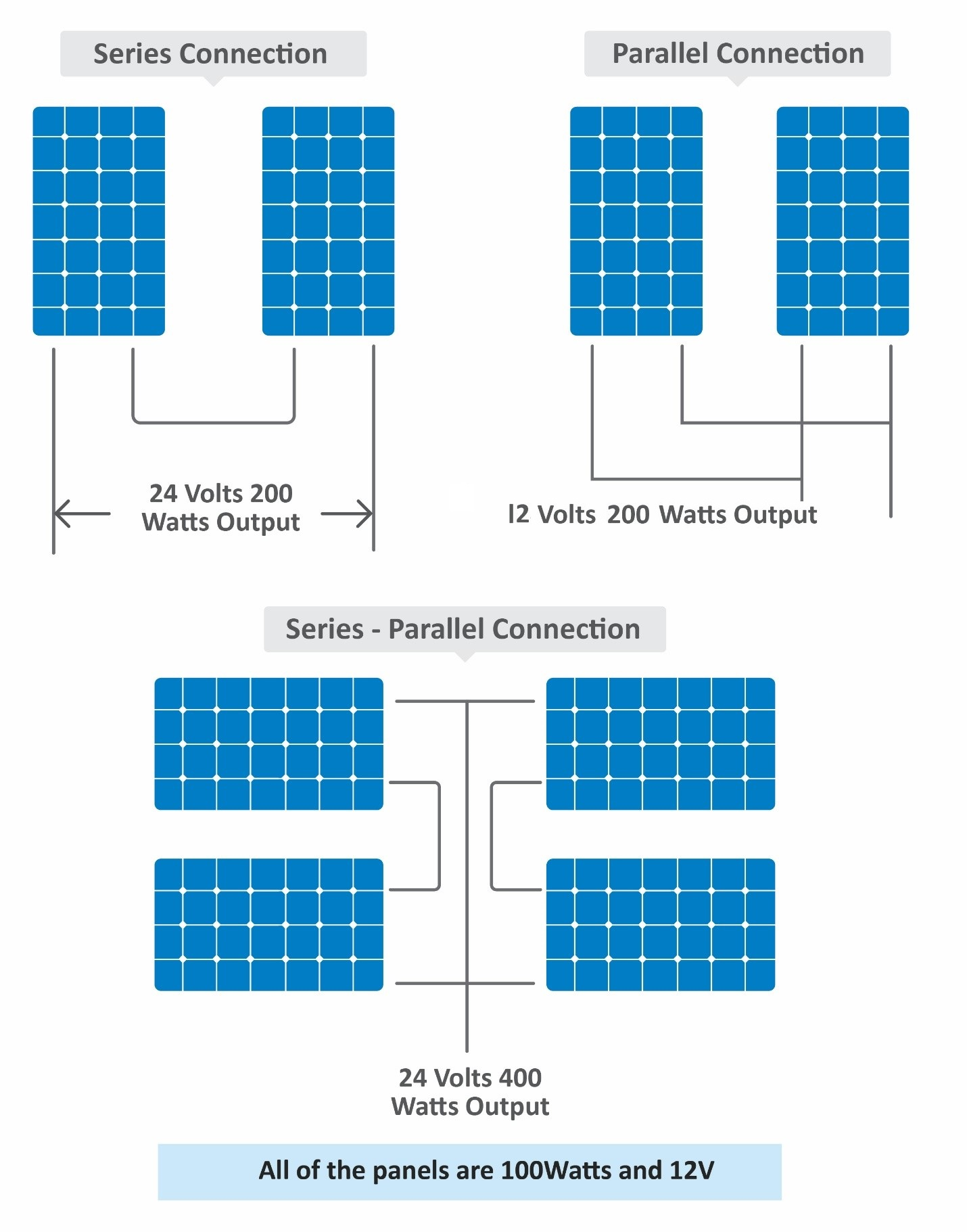
Figure 1- connections of solar panels
Series/parallel connections in solar panels are restricted by system configuration which will be discussed in detail. Photovoltaic system is categorized to on-grid and off-grid systems; in places where electrical distribution network is not available photovoltaic systems are employed to provide electricity for various applications such as agriculture application and etc. these systems are called off-grid systems while for places where electrical distribution network is available photovoltaic systems are employed for save of energy such as street lights; these systems are on-grid ones. Each kind of systems set limitations to connections of solar panels. For example, on-grid systems are limited by the minimum input voltage of inverter where panels should be connected in a true manner so that the voltage of solar panels match the voltage inquiries of the inverter to avoid noticeable power loss in the photovoltaic system. Here the datasheet of SUNNY TRIPOWER SMA Inverter is illustrated, and it’s obvious that input voltage is limited to the minimum and maximum level; so the solar panels should be connected in a series manner to reach the minimum input voltage of the mentioned inverter. These restrictions should be noticed carefully in connections of solar panels due to optimum performance.
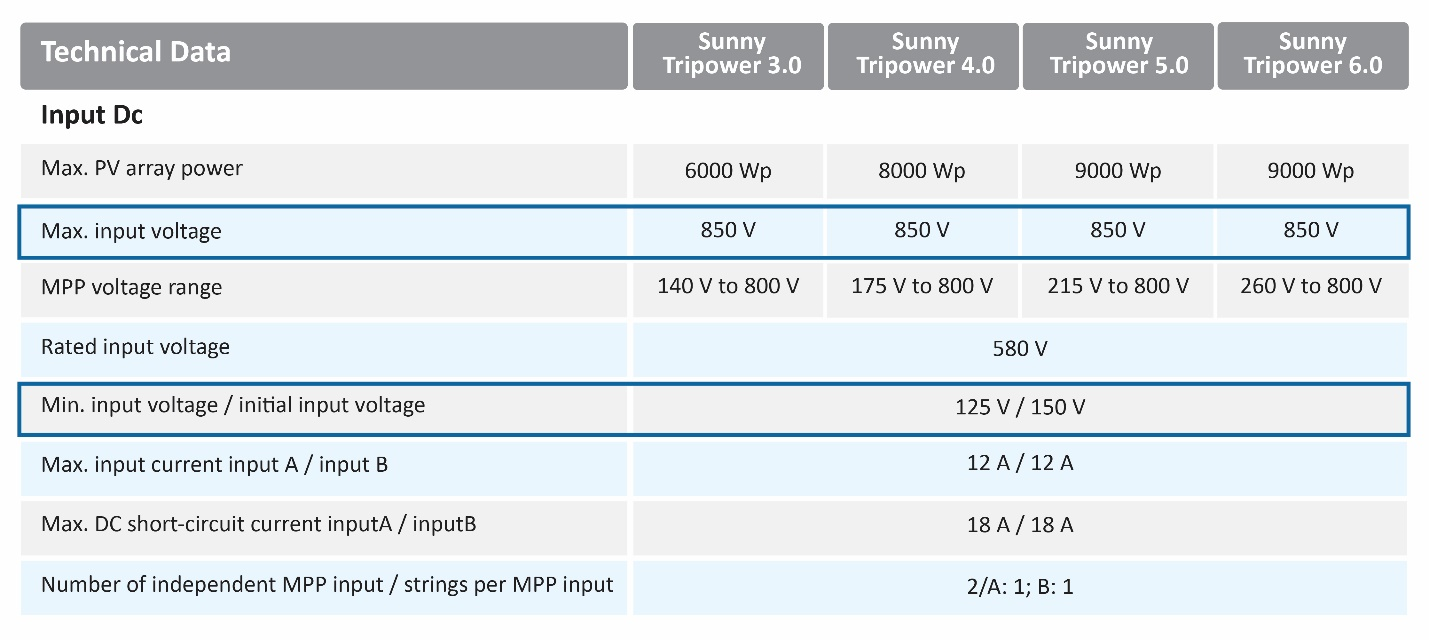
But for off-grid systems, the capacity of the charge controller rules the connection of solar panels. The maximum input power of charge controller governs the voltage and current levels for the solar panels to connect each other. For example, EPEVER XTRA-N series MPPT charge controllers are discussed here, and it’s obvious that for different models the maximum input voltage and power levels are specified and solar panels should be connected in a right manner to achieve the configuration of charge controllers. Optimum performance of the photovoltaic system depends on the selection of the proper charge controller besides the true wiring of solar panels to avoid power loss.
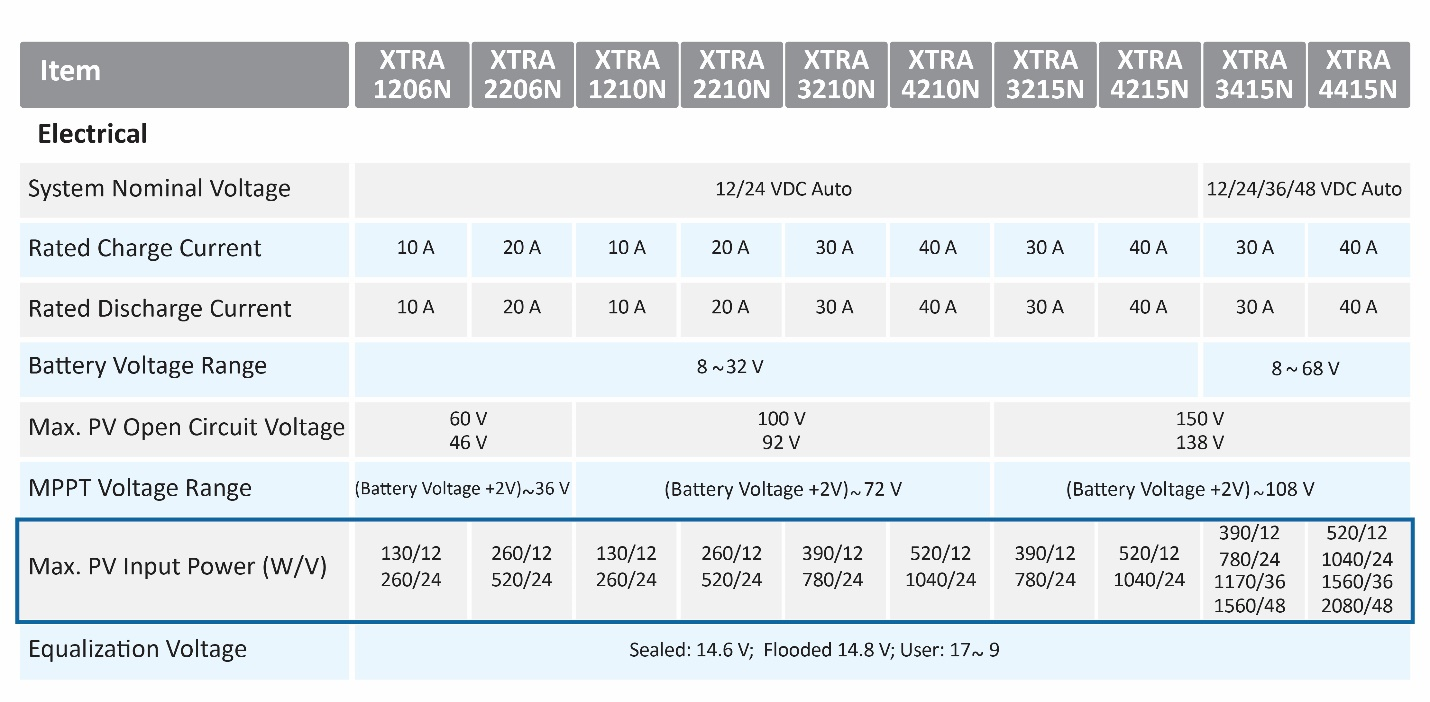
How to make solar panels series or parallel?
In this question, we will answer the methods to wire solar panels to each other. The equipment for parallel and series connection of solar panels is also discussed. MC connectors are mostly used in photovoltaic systems to connect the panels; this is because of their low contact resistance and a low tolerance for the different conditions.
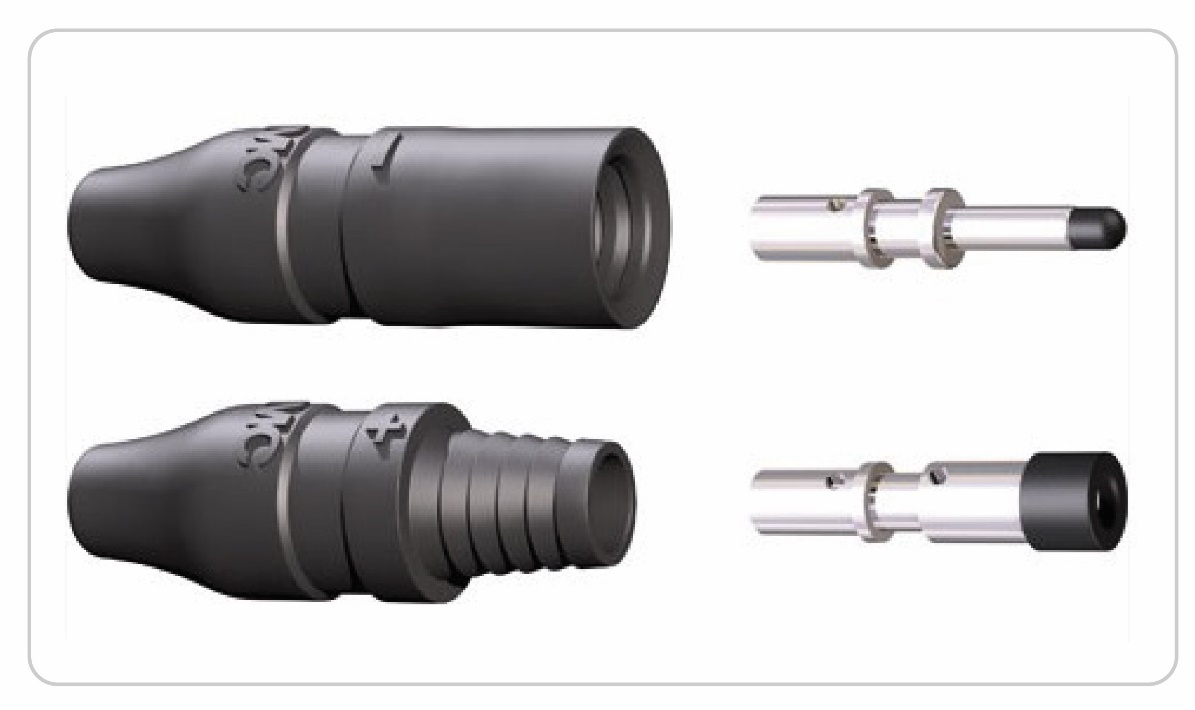
Figure 2- MC Connectors
These MC connectors are provided in various types, but MC4 connector is the best connector to employ in photovoltaic systems to connect the solar panels in series/parallel orders. Male and female types of MC4 connectors along with their extension cables are employed in modern photovoltaic systems to substitute the conventional junction box and wire terminals. These connectors are efficient and simple enough to connect the panels in an arbitrary orientation. These connectors are locked for male and female types that can’t be unplugged easily and requires specific MC4 unplugger. Figure 3 demonstrates the MC4 connectors and their extension cables.
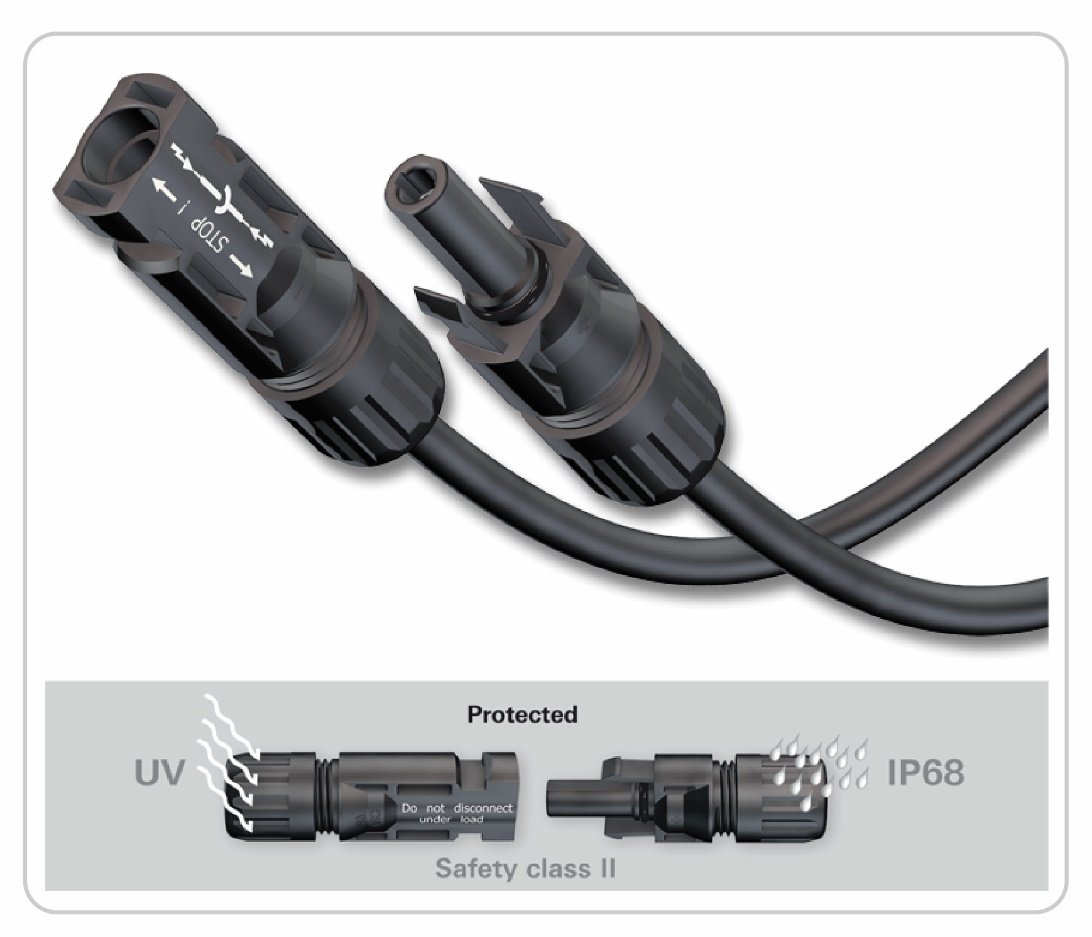
Figure 3-MC4 Connector
In series connections of solar panels, the cells are put close enough in which the extension cable for connectors is not required. Solar panels are usually equipped by a pair of male and female MC4 connectors so that in the case of series connection the negative terminal (female) is directly connected to the positive terminal (male) when the solar cells are oriented close enough.

Figure 4-series connection by MC4 connectors
But in the case of parallel wiring, each cell requires discrete pair of MC4 connectors and the orientation of solar cells is not important in this case, and the distance between panels and charge controller or inverter in off-grid and on-grid systems determine the extension cables for MC4 connectors. It can be concluded that parallel connection requires more equipment and connector than the series wiring so this means more cost and expensive setups-extension cables are expensive-but for special cases which need higher current levels panels should be wired in parallel. MC4 multi-branch connectors are employed in the setup of large solar panels together. Figure 5 illustrates the topology of parallel wiring and application of multi-branch MC4 connectors.
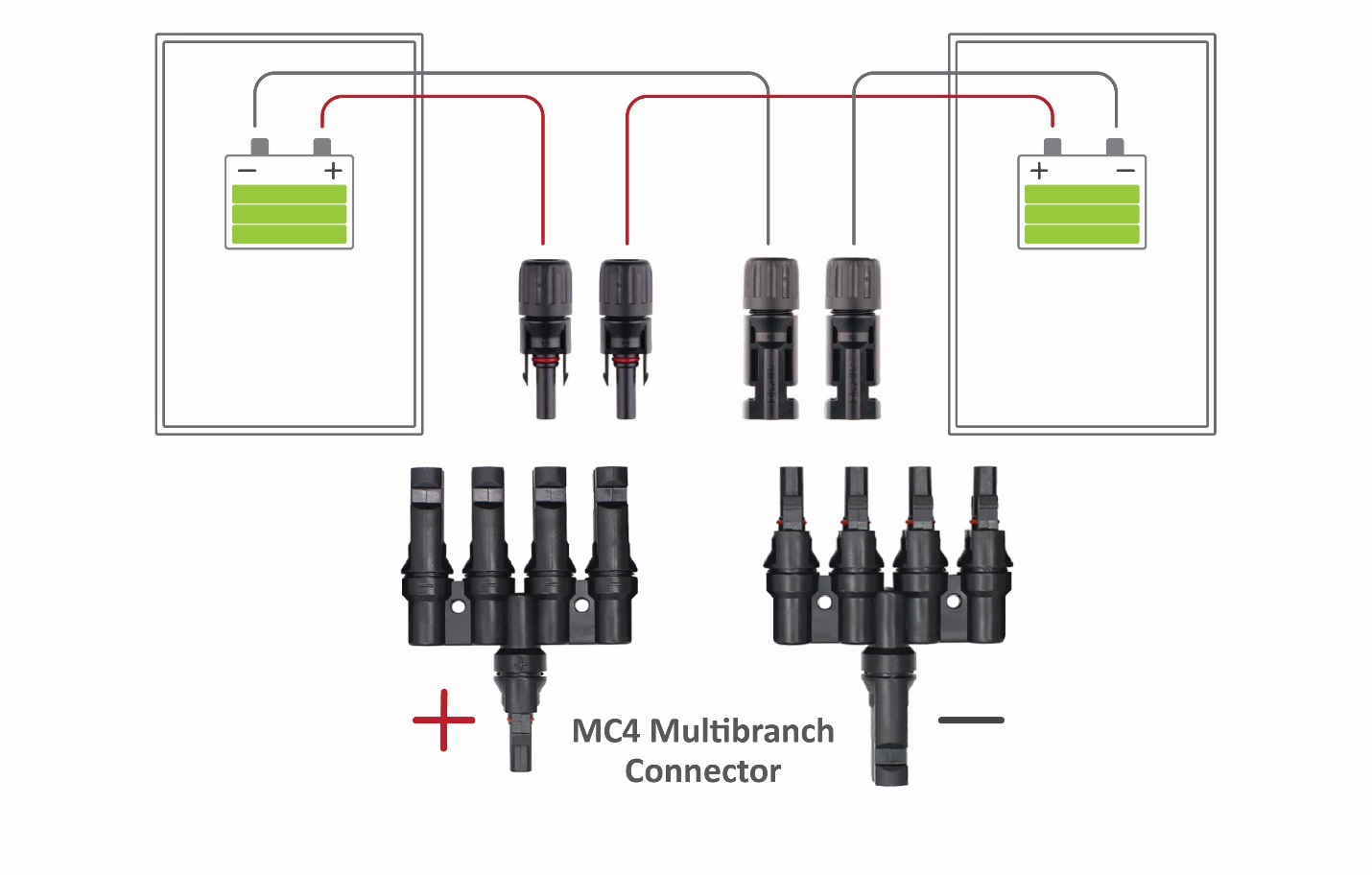
Figure 5- Parallel wiring by MC4 connectors
It is mentioned that MC4 connector are locked to each other, and they need a special disconnect tool to separate the male and female one. This feature helps the reliability of the system in windy and unclear climate conditions. Figure 6 illustrates the disconnect tool of MC4 connector and its application. Finally, we demonstrate the MC4 specifications in this section:
- The maximum current of 30A
- The maximum voltage level of 1000V
- Temperature conditions: -40℃ to +90℃
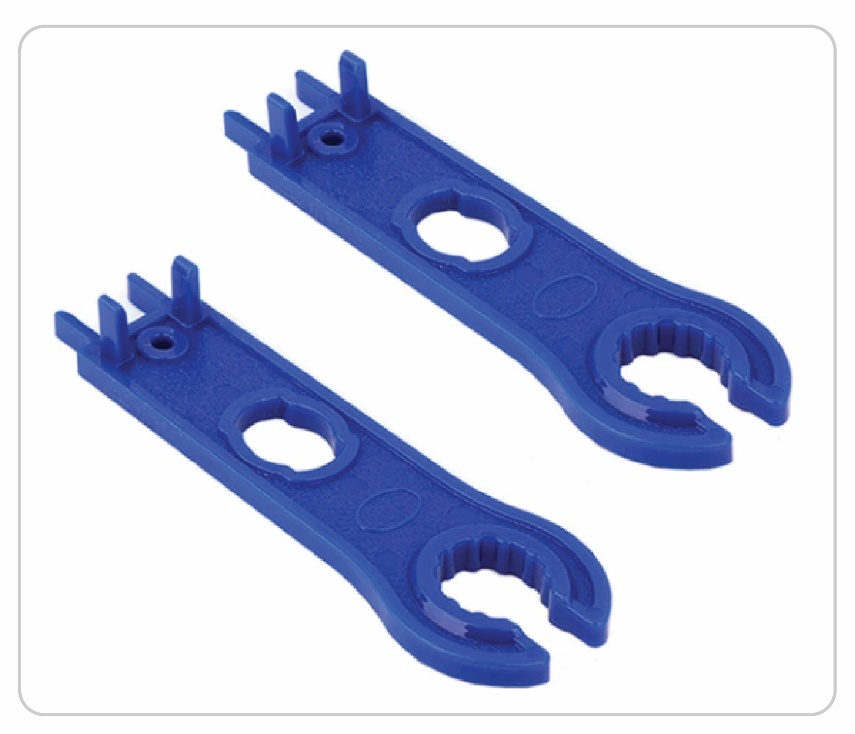
Figure 6-MC4 unplug tool

nice info for my refference. i am user epever too
Thank you sir. We are glad our information is useful to you.